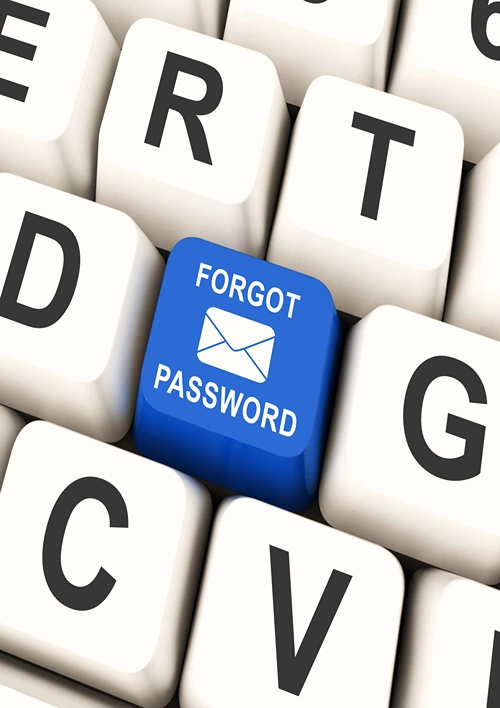Fun and Effective Ways To Teach Kids Good Password Habits
As parents, you only get a handful of years before your child starts dealing with screens. We might not like it, but it’s hard to avoid in modern society. Between online classes, digital games, and chatting with friends, technology quickly becomes woven into nearly every part of their daily life.
And with so many chilling stories of kids being targets of grooming and cyberattacks, it’s no wonder we’re desperately seeking ways to protect our children online.
Kids start creating accounts as young as 6, so it’s crucial that we teach password hygiene practices early on. The good news is that this can be fun! We shouldn’t scare our young people into routines that they don’t understand or even care about. Instead, let’s encourage them to keep their passwords protected through enjoyable activities.
7 FUN PASSWORD SAFETY ACTIVITIES TO DO WITH YOUR KIDS
1. Transform Stories Into Passwords
There are many ways to make a password memorable and unique, and making up a short story, phrase, or rhyme with your child is one of them. Here are some examples:
- Rhyme: Two cats wore hats and ate rats. Password: 2cwh+8r
- Story: Jack the raccoon snuck into the room and munched five cakes. Password: Jtrsitr+m5c
- Phrase: I love camping and swimming and walking. Password: I<3c+s+w
This is a fantastically inventive and creative way to conjure up some unique and memorable password ideas with your child.
2. Strong Passwords vs Weak Passwords Flashcards
Studies show that only around 13% of 3rd to 8th-graders in the U.S. use strong passwords, so there’s clearly a knowledge gap present. It’s vital that your child knows what makes a strong password, but it’s also important to teach them what a weak password looks like, as it may not always be obvious.
There’s a game for this, too:
- On a set of flashcards, write examples of strong and weak passwords. Make sure there are some in between the two.
- Let your child order these flashcards from weakest to strongest.
- Discuss their choices and guide them on why and how they should be reordered, if necessary.
- To finish up the game, give your child the opportunity to strengthen the weaker passwords by adding to them using a different color pen.
3. Password Rules Display
Get creative and put together a visual board, poster, or piece of art with key password rules clearly displayed. Using color and interesting fonts will help your child remember key cybersecurity tips, such as:
- Passwords should be long and jumbled.
- Symbols and numbers belong in passwords.
- Passwords are for your eyes only.
- One password is not enough!
It’s a great idea to stick this on a wall near an area where computers and other digital devices are frequently used, such as your kid’s desk.
4. The Alphabet Game
This is a super-easy game that doesn’t require any resources. All you have to do is pick a section of the alphabet – around three letters – and come up with a short phrase. Use this phrase to create a memorable password. Here are some examples:
- Alphabet sequence: LMO. Password: LilaMetOliva2025<3
- Alphabet sequence: DEF. Password: DenzelEatsFalafels123!
- Alphabet sequence: CDE. Password: CrocodilesDateElephants!111
These passwords can be as ridiculous and funny as your child likes. In fact, the more outrageous, the more memorable.
5. Roll the Dice
This quick-fire activity is perfect for encouraging randomness and unpredictability when it comes to creating passwords. It’s as simple as the following:
- Get two dice and decide which one will be for numbers and which for letters.
- For the letter dice, each number represents a letter in the alphabet. Eg. 1=A 2=B, 3=C, etc.
- Roll both dice however many times you like and write down the number and letter from each roll. Before you know it, you’ll have a totally random mega-password made up of different letters and numbers.
Keep in mind that this game is great for password randomness, but they may be hard to remember. That’s where a password manager comes in handy, as you only need to remember one master password.
6. Ready, Steady, Go!
This game is especially effective if you have more than one child who’s of the right age to learn about healthy password habits. The basic idea is to create challenges involving password creation, but you can get really creative with this. Here are some ideas for inspiration:
- Who can make a password that includes rhymes the fastest?
- Who can make the funniest password in under 30 seconds?
- Hide a phrase or short story in a password, and then we’ll guess what it is.
7. Play Teacher
Once you’re happy that you’ve taught your child all about password security, the best way to help them consolidate their learning is by letting them take the role of teacher. This could be to a younger sibling, friend, or cousin, or even a cuddly toy. Help your child get into character and teach their ‘student’ everything you’ve taught them. This is a science-backed method of retaining new information, and also fun for everyone involved!
KEEPING YOUR FAMILY SAFE WITH STRONG PASSWORDS
It’s no exaggeration to say that weak passwords can endanger your family’s safety. Fortunately, there are countless steps you can take to ensure top-notch password hygiene in your household. Fun activities to promote smart password creation methods are a great place to start, but it’s also highly recommended to use a password manager that’s designed for families. With this software, all your family’s passwords and credentials are kept secure in one place and at a low cost.
Getting into the swing of healthy password habits is easier than you think, so why not make a start today and transform your family’s online safety into a fun routine?






